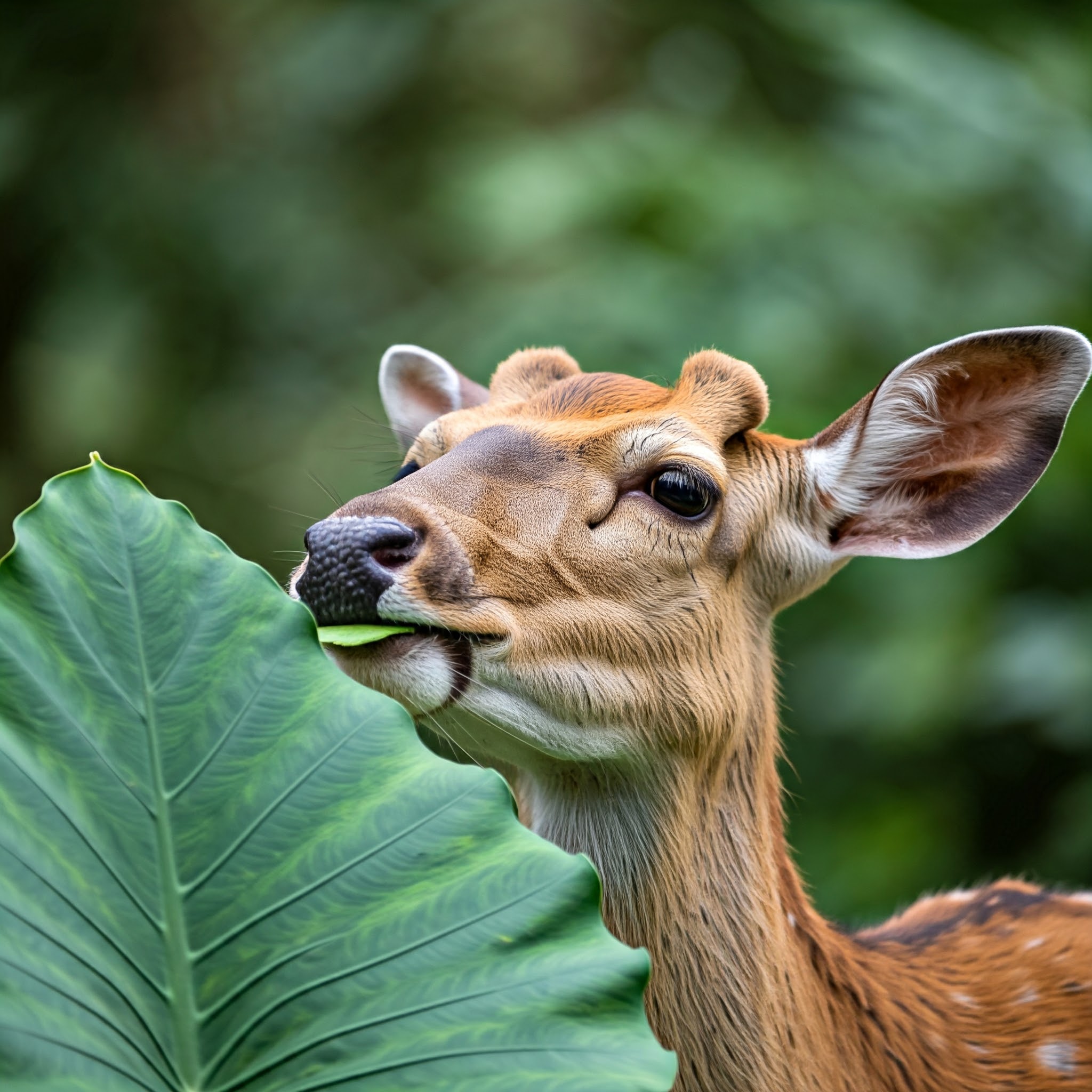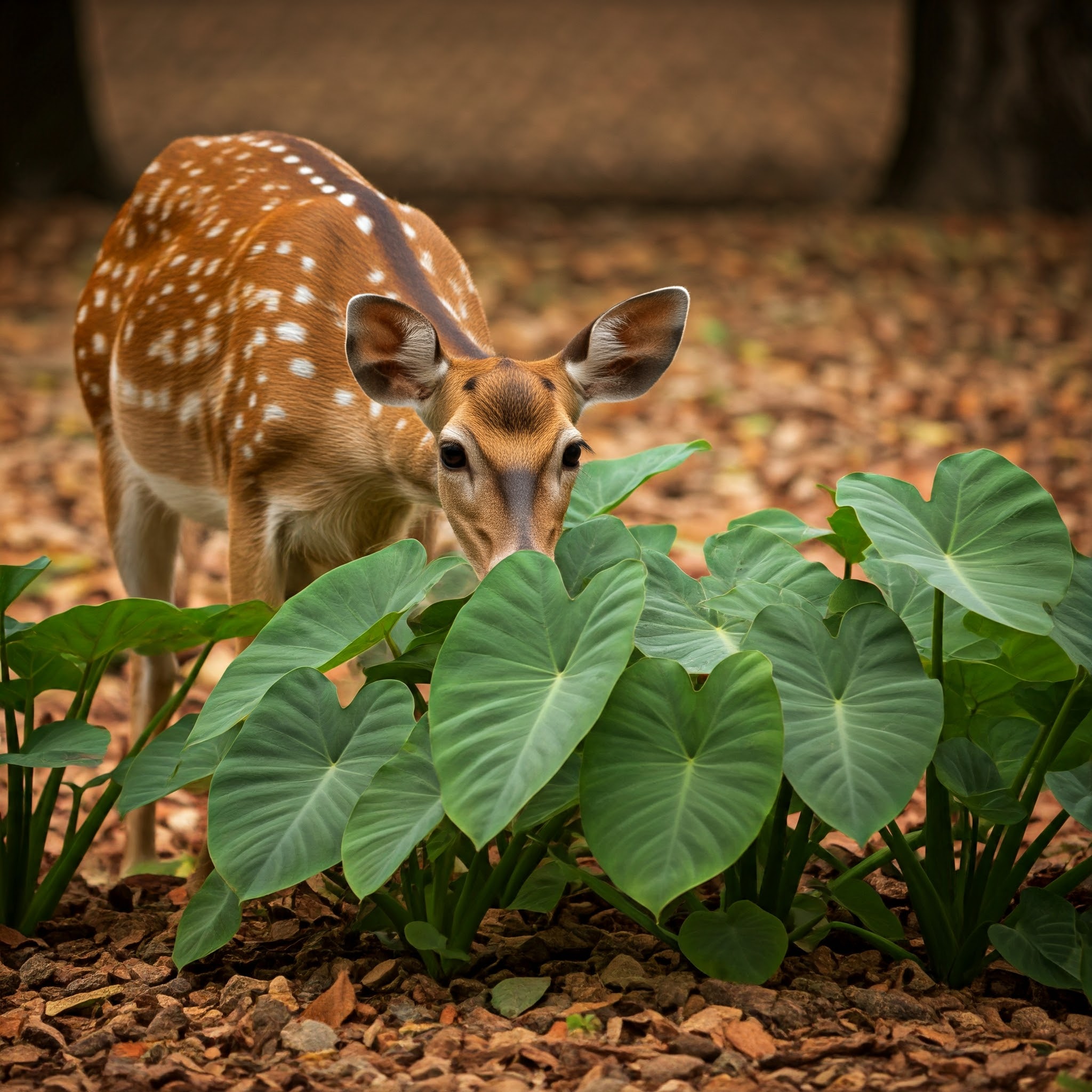
Exploring the Diet of Deer: Do They Eat Elephant Ears?
In this article, we will explore the diet of deer and answer the question: do they eat elephant ears? We will also discuss what deer typically eat in a garden setting, how to protect your plants from deer, and provide information on the feeding habits of these animals.
What do deer eat in a garden?
Exploring the Diet of Deer: Do They Eat Elephant Ears?
Deer are known to be quite opportunistic feeders, and they will eat a wide variety of plants if given the chance. In a garden setting, deer will often munch on vegetables, fruits, flowers, and shrubs. Some common favorites include roses, hostas, lilies, and beans. Deer are also attracted to plants with tender leaves and shoots, making them particularly vulnerable to hungry deer.
To protect your garden from deer, consider planting deer-resistant plants, using physical barriers like fences or netting, and using scent or taste deterrents. It is also important to remove any attractants like fallen fruit or birdseed that may entice deer into your garden.

Do deer eat elephant ears?
Elephant ears, or Colocasia plants, are known for their large, tropical-looking leaves that resemble the ears of an elephant. While these plants are not a top choice for deer, they are not immune to deer browsing. In times of food shortage or in areas with a high deer population, deer may nibble on elephant ears.
If you have elephant ears in your garden and are concerned about deer damage, it is a good idea to take precautions to protect them. This could involve using fencing, repellents, or planting other deer-resistant plants nearby to distract them.

How do deer feed in different seasons?
Deer feeding habits can vary depending on the season. In the spring and summer, deer primarily feed on tender shoots, leaves, and grasses. They may also browse on fruit and vegetable plants in gardens during this time. In the fall, deer focus on consuming more high-calorie foods to prepare for the winter, such as nuts, acorns, and grains. During the winter, when food is scarce, deer will often resort to eating woody browse and bark from trees.
It is important to be mindful of deer feeding patterns throughout the year and take steps to protect your garden accordingly. By understanding when deer are likely to be searching for food, you can implement strategies to deter them from feasting on your plants.

Are there any plants that deer won’t eat?
While no plant is completely deer-proof, there are certain plants that deer are less likely to consume due to their taste, texture, or scent. Some examples of deer-resistant plants include lavender, yarrow, daffodils, and ferns. Plants with strong smells or prickly foliage are often less appealing to deer.
However, it is worth noting that deer preferences can vary by region and individual deer may develop a taste for plants that are typically considered deer-resistant. It is always a good idea to diversify your garden and include a mix of plants with varying levels of deer resistance.

How can I deter deer from my garden?
There are several methods you can use to deter deer from feeding on your garden plants. One common approach is to use physical barriers like fences or netting to prevent deer from accessing the plants. Another option is to use scent or taste deterrents, which can include products like deer repellent sprays or soap bars.
You can also create a sensory barrier by planting strong-smelling herbs or flowers around your garden perimeter, as deer are often deterred by strong scents. Additionally, removing attractants like fallen fruit, birdseed, and standing water can help reduce deer activity in your garden.

Conclusion
In conclusion, deer are adaptable feeders that will consume a wide range of plants if given the opportunity. While elephant ears are not a top choice for deer, they may still munch on them in certain circumstances. By understanding deer feeding habits, planting deer-resistant plants, and implementing deterrent strategies, you can help protect your garden from deer damage.
FAQs
Do deer eat only plants in gardens?
No, deer are known to consume a variety of plants, including those in gardens, forests, and fields. They have a diverse diet that may include grasses, leaves, fruits, nuts, and even woody browse.
Can deer be attracted to other sources of food in a garden?
Yes, deer may be attracted to fallen fruits, birdseed, and other food sources in a garden. It is important to remove these attractants to reduce deer activity in your garden.
How high should a fence be to keep deer out of my garden?
For deer-proof fencing, it is recommended to have a fence that is at least 8 feet tall. Deer are skilled jumpers, so a tall fence is essential in deterring them from entering your garden.
Are there any natural predators of deer that can help control their population?
In some regions, natural predators like wolves, bears, and mountain lions can help control deer populations. However, the presence of these predators may vary depending on the location.
What are some environmentally friendly ways to deter deer from my garden?
Using natural deterrents like plant barriers, applying homemade repellents, and planting deer-resistant plants are all environmentally friendly ways to deter deer from your garden. These methods are safe for the environment and non-toxic to wildlife.
